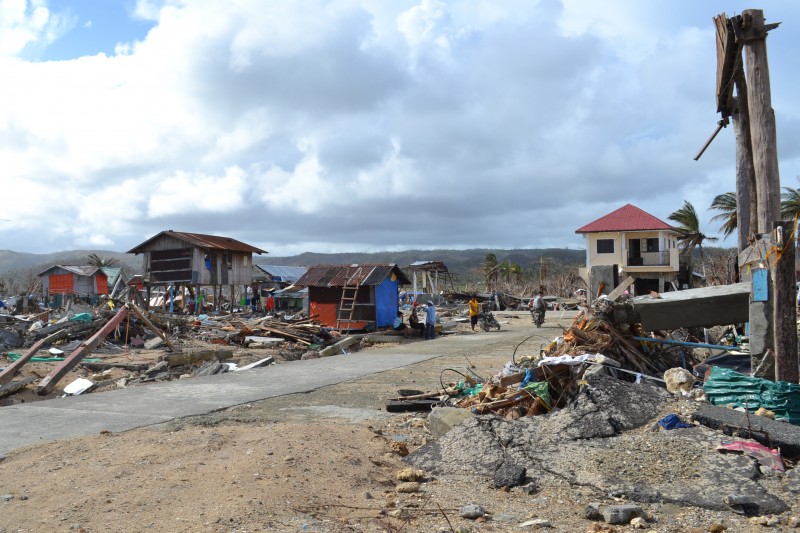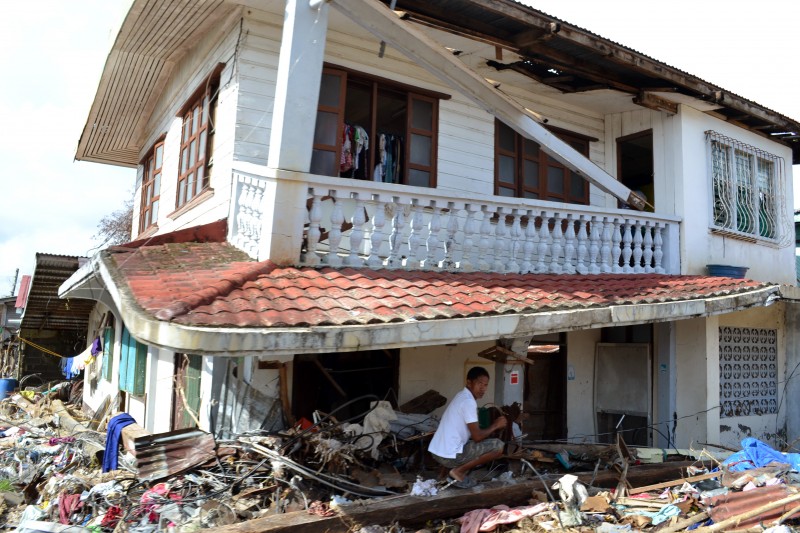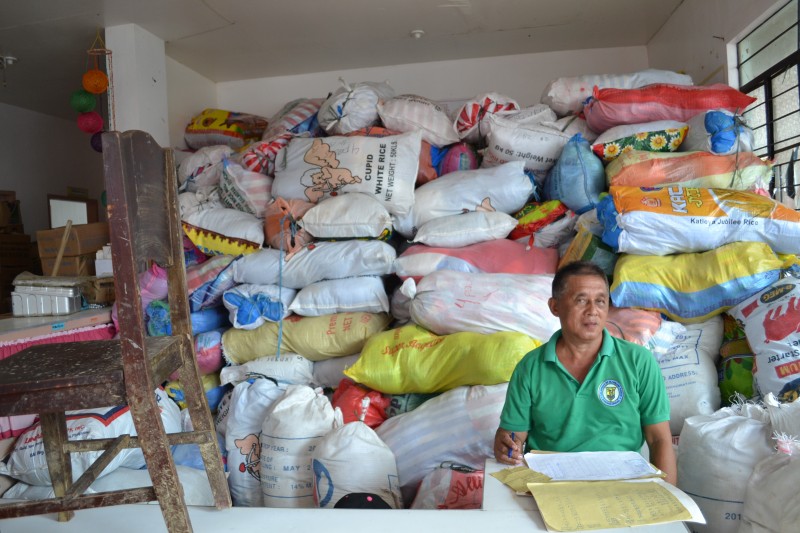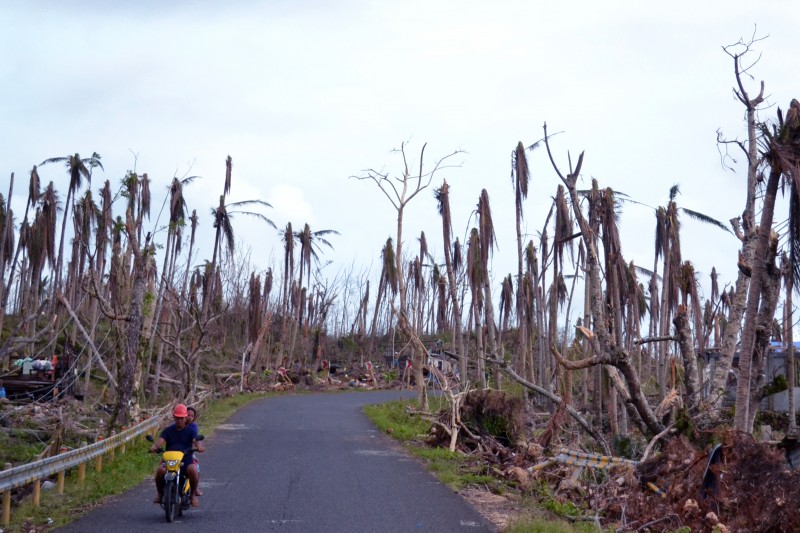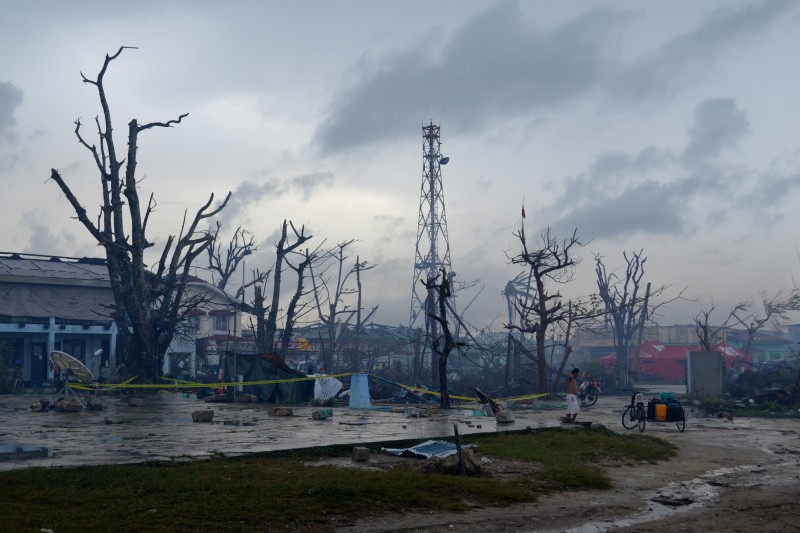Day 3: Tale of two towns
The road to Borongan was long; the team spent hours negotiating the hilly terrain. The view would have been spectacular if not for the bad weather. At one point, we passed by a bus maneuvering away from the site of a small landslide.
Nearing the small city of Borongan, we noticed a van with a large package piled up on it.
“Relief Goods. For Borongan, E. Samar. From Tondo, Manila,” read the tarp posted behind it. The van stopped in Borongan City, and we chatted with Gary Codillo who had gone all the way to Manila to seek help for his neighbors in Balangkayan town. He was back, with a van-full of relief goods from his old friends in Tondo.
READ: Relief goods for typhoon victims from Tondo with love
Reaching the eastern coast of the island, we began to see the effects of Supertyphoon Yolanda. Instead of the lush forest in the mountainous area we passed earlier, the trees near the coast looked lifeless, not a single leaf left. Even the mangroves weren’t spared as some were swept inland by the storm surge. Slabs of asphalt littered the sandy dirt-roads.
We drove in silence. Based on the trail of devastation alone, it was clear that Yolanda was something the country had never seen before.
After talking to the locals, two towns piqued our interest: Hernani, where many died after an evacuation center collapsed, and Balangkayan, where everyone was spared.
The team reached Balangkayan first. Immediately, we saw large piles of debris in front of what used to be ancestral homes. The two-storey houses drooped and sagged, their wooden terraces almost kissing the ground.
Further south we saw the coastal villages, or what was left of them. With most of the houses on the coast washed out, residents scavenged for wood and metal to build temporary shelters.
We met a composed Mayor Allan Contado in Balangkayan’s municipal hall. Contado’s order to force-evacuate the residents saved countless lives on that fateful day ofNovember 8.
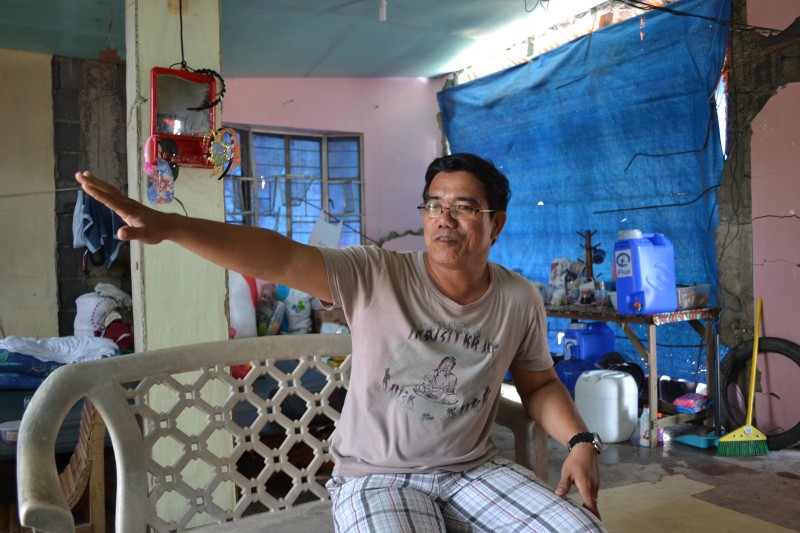
Jemsel Valdez recalls how he escaped the wrath of Supertyphoon Yolanda. PHOTO BY KRISTINE SABILLO/INQUIRER.net
The mayor said the residents supported him because the town was no stranger to storm surges. A young engineer, however, defied the order, thinking that his concrete house could withstand Yolanda.
In the end, Jemsel Valdez and his family barely escaped the sea as it swallowed the coastal villages of Balangkayan. He almost became the lone fatality of the town, he said, as he recalled the traumatic event. Large debris, including uprooted coconut trees, carried by the sea’s massive waves tore down some of the walls of his concrete house. He was lucky to escape with an injured leg.
READ: Stubborn man almost became lone ‘Yolanda’ fatality in Samar town
In the neighboring town of Hernani, we met two brave women: Maricel Jerusalem, who swam through a storm surge with her two-week-old baby, and Mercy Calvadores, whose house, which only had a couple of walls left standing, saved 53 people.
Both of them also sought shelter in concrete houses, meters away from the shore, only to suffer near-death experiences at the height of the deadly storm surges.
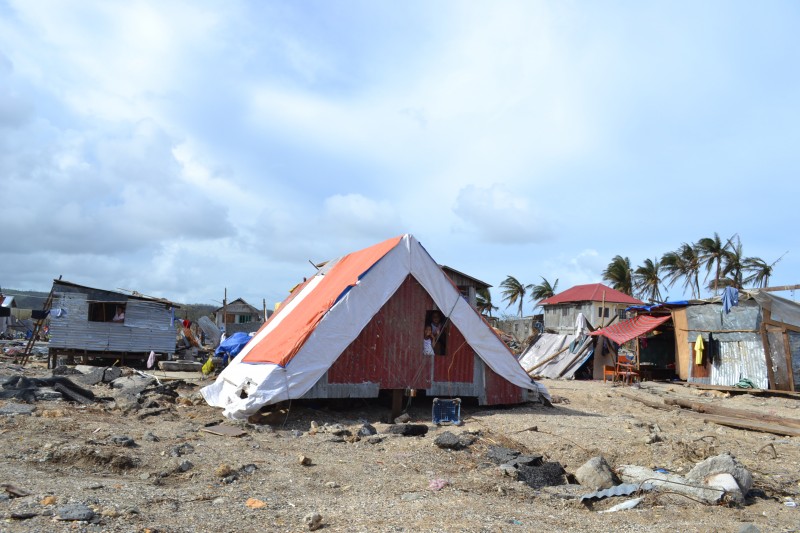
Two kids peer out of their makeshift home built from corrugated metal scavenged from debris left by the typhoon. PHOTO BY KRISTINE SABILLO/INQUIRER.net
Like most of their neighbors, Maricel’s family survived only on relief goods. However, there were rumors that the local government was hoarding the supplies.
At the heavily damaged town hall, Hernani Mayor Edgar Boco was defensive as we asked him about the fatalities, which had reached 70 at the time, and the distribution of relief goods. We saw sacks of aid crammed in one of the buildings.
The mayor denied accusations that they were depriving the people of relief goods but said they were merely scheduling its release. He said he didn’t want people to “abuse” the system and “gorge themselves” on the food. Until when will the national government and aid groups help them? He did not know.
READ: 2 weeks after `Yolanda’, tragic tales still haunt Hernani folk
Although residents from both towns were suffering the same plight of homelessness and hunger, the situation showed the team the important role of the local government in disaster risk reduction and rehabilitation. Hernani was still reeling from the terrible fate of many of its residents while Balangkayan, with its zero casualty count, was able to focus on bouncing back.
While Mayor Boco was left to fend off accusations of neglect, Mayor Contado was already thinking of livelihood options for his people.
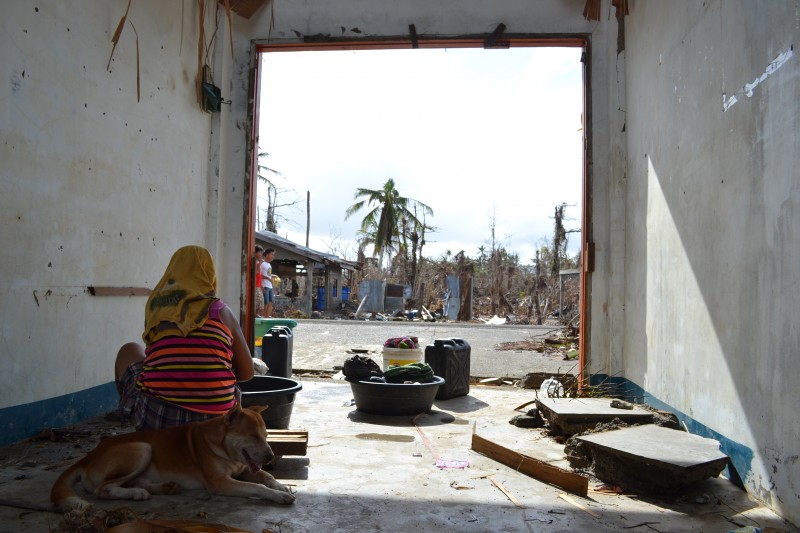
A woman does her laundry under the shelter of an abandoned public market. She stares at the lot across the road where her house once stood. PHOTO BY KRISTINE SABILLO/INQUIRER.net
Fifty-eight kilometers away from Hernani was the town of Guiuan, where Yolanda made its first landfall at 4:40 a.m.
With many of its coconut trees destroyed, it was clear that Guiuan bore the brunt of the typhoon’s strong winds, which peeled the roof off almost all of the houses.
Reaching the town proper just before sundown, our driver Mang Lauro saved us from camping out in the open when we chanced upon some of his old acquaintances working for a television network. (Sadly, Mang Lauro died early this year.)
His friends graciously hosted us at their makeshift camp beside an evacuation center. We were able to share in their modest dinner of rice and canned goods.
Soon, Guiuan was enveloped in darkness, broken only by a flickering candle or a flashlight dancing along the corridors of the evacuation center.















